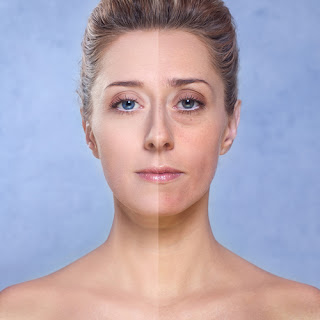It's a fact of life that everyone gets older. As we age, our body changes, and many of the changes we see take place in our faces. Everyone knows that the way they look changes over time; wrinkles form, facial features change and alter; but not everyone knows why and how this happens.
Three Zones
Looking at the human face, we can divide it into three separate areas or "zones." These zones are useful classifications when discussing the way the human face changes through the years. When discussing aging, these three areas are referred, so it is important to know exactly what portions of the face they encompass.
The upper face includes the area around your forehead, eyebrows and eyes. The mid-face includes the area under the eyes, the nose and the cheek regions of the face. The lower face includes everything below the nose such as the lips, chin and jawline.
Four Layers
Just as the face is divided into three regions, it is also made up of four basic layers. As a person ages, these layers change, giving the characteristic features of an aging human face. These four features, from deepest to most superficial are bone, muscle, the subcutaneous layer and skin.
Different decades see different changes take place in these layers and these combined changes are what case the various facial changes over time such as wrinkles and loss of face volume.
Bone
Although bones are generally thought of as unchanging once we reach adulthood, nothing could be father from the truth. As we age, our bones continue to change and alter, shifting subtly and taking on slightly different shapes.
Because bone is the foundation on which the shape of the other three layers are built, changes in bone structure, volume and shape can cause changes in the other layers. For example, your cheekbones may become less prominent as you age, causing a change in the shape and volume of your cheeks and affecting the three layers above.
Muscle
As we grow older, the strength and firmness of our muscles weakens. As a result, the muscles don't tend to spring back into shape as easily as they did when we were younger.
As the face is the most expressive portion of our bodies, we are always using the muscles when making facial expressions. As these muscles become weaker over time, they don't snap back into their original shapes as they did earlier in life. Combined with the loss of elasticity in the skin, this causes the creases in the skin caused by repeated facial expressions to become permanent, creating wrinkles.
Subcutaneous Layer
The subcutaneous layer is the layer that lies just beneath the skin. It is also known as the fatty layer or the volume layer. This layer contains collagen, fat and a substance called hyaluronic acid.
While you might be familiar with collagen and fat, most people aren't as familiar with what hyaluronic acid is and what its function is. Essentially, this is an acid that is used in repairing skin tissue. When you become sunburned, the UV rays slow the body's production of this acid. As a result, the degradation of the skin increases significantly, thus causing the skin to peel. This is one reason why the use of sunscreen is important to reduce the effects of the sun's rays.
As we age, the volume of collagen, fat and hyaluronic acid decreases. This loss of volume can cause not only changes in how the face looks, often causing it to seem to droop, but the skin no longer snaps back as well as it once did.
Skin
The skin, or epidermis, is the most visible part of the aging process. The skin is closely tied to the subcutaneous level, and the point at which one ends and the other begins can be quite difficult to discern.
As time drags on, the skin loses its own elasticity, the replacement of the outer layer of skin slows and the function of the sebaceous glands becomes lessened. The skin itself no longer snaps back, and wrinkles form over time.
It's a Combination!
Like so many things in life, the effects of aging are not caused by one single thing but rather a combination. As bone changes, muscle loses strength, the subcutaneous level loses volume and the skin just no longer bounces back, the effects of aging, such as wrinkles and sagging skin, begin showing.
Bella Labella founded Bella Labs in 2009 to become a leading edge skin care supplement manufacturer. To learn more, follow Bella Labs on Twitter.











0 comments:
Post a Comment